|
 |
SEGHERS, Hercules
|
|
Dutch Baroque Era Painter and Printmaker, ca.1590-1638
Dutch landscape painter and etcher. Seghers's work greatly influenced early 17th-century Dutch landscape painting. He studied with the painter Coninxloo (1544C1607) and may have traveled to Italy and in the Alps. Some of the frenzy of his personal life can be seen in his rare paintings and his more numerous, masterly etchings. His landscapes consist of vast, often desolate, panoramas and powerful, smaller scenes rendered with drama and pathos. Rembrandt owned eight paintings by him, and his own landscape style was influenced by Seghers. |
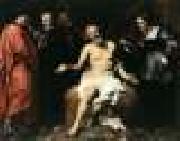 |
SEGHERS, Gerard
|
|
Flemish Baroque Era Painter, 1591-1651
Flemish painter, dealer and collector, active also in Italy and Spain. He grew up in Antwerp, a city that had only recently been liberated from the rebels by the Spanish troops. His father, a keeper of a wine tavern, originally had Calvinist sympathies but returned to the Catholic faith after 1585. Gerard possibly trained, as did afterwards his younger brother Jan Baptist Seghers, who later became a goldsmith, with Gaspar de Crayer (b 1551), the father of the well-known painter of the same name. At the age of 12 Seghers was listed as a pupil in the Guild of St Luke in Antwerp; the documents, unfortunately, fail to mention the name of his teacher. Florent Le Comte (1699) called him a pupil of Abraham Janssen |
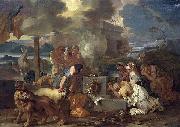 |
Sebastien Bourdon
|
|
(2 February 1616 - 8 May 1671) was a French painter and engraver. His chef d'œuvre is The Crucifixion of St. Peter made for the church of Notre Dame.
The Finding of Moses, c. 1650 (National Gallery of Art, Washington)Bourdon was born in Montpellier, France, the son of a Protestant painter on glass. He was apprenticed to a painter in Paris. In spite of his poverty he managed to get to Rome in 1636; there he studied the paintings of Nicolas Poussin, Claude Lorrain and Caravaggio among his eclectic selection of models, until he was forced to flee in 1638, to escape denunciation by the Inquisition for his Protestant faith. Bourdon's facility rendered him adept at portraiture, whether in a dashing Rubens manner or in intimate, sympathetic bust-length or half-length portraits isolated against plain backgrounds that set a formula for middle-class portraiture for the rest of the century, landscapes in the manner of Gaspar Dughet or cappricci of ruins, mythological "history painting" like other members of Poussin's circle or the genre subjects of the Dutch Bamboccianti who were working in Rome. His eclectic range of styles have given art historians exercise in tracing his adaptation of his models, while the lack of an immediately recognizable "Bourdon style" has somewhat dampened public appreciation.
In 1652 Christina of Sweden made him her first court painter. Bourdon spent most of his working career outside France, where, though he was a founding member of the Academie de peinture et de sculpture (1648), he was for long largely dismissed as a pasticheur, a situation partly rebalanced by a comprehensive exhibition in 2000 of his work at the Musee Fabre, where the collection includes a fine Lamentation painted in the last years of his life.
His success required the establishment of an extensive atelier, where, among his other pupils worked Nicolas-Pierre Loir and Pierre Mosnier. He died in Paris in 1671. |
 |
Sebastiano Ricci
|
|
(1 August 1659 - 15 May 1734) was an Italian painter of the late Baroque school of Venice. About the same age as Piazzetta, and an elder contemporary of Tiepolo, he represents a late version of the vigorous and luminous Cortonesque style of grand manner fresco painting.
He was born in Belluno, son of Andreana and Livio Ricci. In 1671, he apprenticed to Federico Cerebri of Venice. Others claim Ricci's first master was Sebastiano Mazzoni. In 1678, a youthful indiscretion led to an unwanted pregnancy, and ultimately to a greater scandal, when Ricci was accused of attempting to poison the young pregnant woman to avoid marriage. Imprisoned, he gained release only after intervention of a nobleman, probably a Pisani family member. He married the pregnant mother in 1691, although this was a stormy union.
After his arrest, he moved to Bologna, where he domiciled near the Parish of San Michele del Mercato. His painting style there was apparently influenced by Giovanni Gioseffo dal Sole. On 28 September 1682 he was contracted by the "Fraternity of Saint John of Florence" to paint a Decapitation of John the Baptist for their Oratory. On 9 December 1685, the Count of San Segundo near Parma commissioned from Ricci the decoration of the Oratory of the Madonna of the Seraglio, which he completed in collaboration of Ferdinando Galli-Bibiena by October 1687, receiving a compensation of 4,482 Lira. |
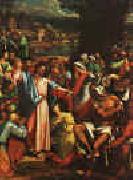 |
Sebastiano del Piombo
|
|
1485-1547 Italian Sebastiano del Piombo Galleries
Italian painter. He was one of the most important artists in Italy in the first half of the 16th century, active in Venice and Rome. His early, Venetian, paintings are reminiscent of Giovanni Bellini and to a lesser extent of Giorgione. With his move to Rome in 1511 he came under the influence of Raphael and then of Michelangelo, who supplied him with drawings. After the death of Raphael (1520) he was the leading painter working in Rome and was particularly noted as a portrait painter. In his finest works, such as the Piete (1513; Viterbo, Mus. Civ.) and the Flagellation (1516-24; Rome, S Pietro in Montorio), there is a remarkable fusion of the Venetian use of colour and the grand manner of central Italian classicism. |
 |
Sebastiano Conca
|
|
Italian Baroque Era Painter , 1680-1764
was an Italian painter. He was born at Gaeta, then part of the Kingdom of Naples, and apprenticed in Naples under Francesco Solimena. In 1706, along with his brother Giovanni, who acted as his assistant, he settled at Rome, where for several years he worked in chalk only, to improve his drawing. He was patronized by the Cardinal Ottoboni, who introduced him to Clement XI, who commissioned a well-received Jeremiah painted for the church of St. John Lateran. Conca was knighted by the pope. He collaborated with Carlo Maratta in the Coronation of Santa Cecilia in the namesake's church of Santa Cecilia in Trastevere (1721-24). He was elected in 1718 to the Accademia di San Luca and its director in 1729-1731 and 1739-1741. His painting was strongly influenced by the Baroque painter Luca Giordano. Among Conca's pupils were Pompeo Battoni, Andrea Casali, Placido Campoli, Corrado Giaquinto, Gaetano Lapis, Salvatore Monosilio, Literio Paladini, Drancesco Preziao, Rosalba Maria Salvioni, Gasparo Serenari, and Agostino Masucci, He received widespread official acclaim and patronage. He worked for a time for the Savoy family in Turin on the Oratory of San Filippo and Santa Teresa, in the Venaria (1721-1725), for Basilica di Superga (1726), and Royal Palace (1733). He painted frescoes of Probatica, or Pool of Siloam, in the Ospedale di Santa Maria della Scala (hospital) of Siena. In Genoa, he painted large allegorical canvases of the Palazzo Lomellini-Doria (1738-1740). In 1739, he published a guide to painting: Ammonimenti (or Admonishments), which blended moralistic advice with technique. He returned to Naples in 1752, and enjoyed the royal patronage of Charles III. |
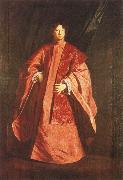 |
Sebastiano Bombelli
|
|
Italian, 1635-1719, Italian painter. He was perhaps the most influential Italian portrait painter of the later 17th century. His early style was formed by his father, Valentino Bombelli, a painter in Udine, and his godfather, the Mannerist artist Girolamo Lugaro. In the early 1660s he was in Venice (Boschini; Sansovino), where he responded passionately to the brilliant colour, painterly freedom and naturalism of 16th-century Venetian artists, particularly Veronese |
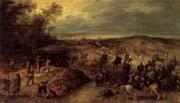 |
Sebastian Vrancx
|
|
Flemish Baroque Era Painter ,
b. 1573, Antwerpen, d. 1647, Antwerpen
Antwerpen,was a Flemish Baroque painter and etcher of the Antwerp school. He was an apprentice in the workshop of Adam van Noort, who also trained many illustrious painters such as Peter Paul Rubens, Jacob Jordaens and Hendrik van Balen. He also visited the workshop of the Antwerp painter Paul Bril in Rome around 1600. He was esteemed as one of the main painters of battle scenes, and works by Vrancx were in the collection of Peter Paul Rubens. As a collaborator he worked at times with Jan Brueghel the Elder. and together with Rubens, Frans Francken the Younger, van Balen, Frans Snyders and Joos de Momper the Younger on the Allegory of the Senses, two works commissioned on the occasion of the archduke Albert of Austria's visit to Antwerp. His best-known student is Pieter Snayers. Most of his pictures represent biblical scenes or scenes of war, such as the sack of towns, cavalry combats, genre paintings and allegorical subjects. Though occasionally vigorous in drawing, his paintings are dull and heavy in tone. He was at the same time a writer of poetry, comedies and tragicomedies for the chamber of rhetoric De Violieren. He was served as dean of the Antwerp painters' Guild of St. Luke, and was a district head and captain of the militia. His works can be found in the Royal Museum of Fine Arts in Antwerp, |
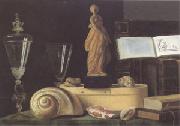 |
Sebastian Stoskopff
|
|
Strasbourg 1597-Idstein 1657
was an Alsatian painter. He is considered one of the most important German still life painters of his time. His works, which were rediscovered after 1930, portray goblets, cups and especially glasses. The reduction to a few objects, which is characteristic of early still life painting, can again be recognized in Stoskopff's painting. His chief works hang in Strasbourg and in Saarbr??cken. Sebastian Stoskopff was born in 1597 in Strasbourg. His father was employed by the city since 1590 and acted as a mounted courier or royal escort, driving a one-horse-carriage. In 1614, Stoskopff's father asked the Strasbourg council for help for his 17-year-old son. He wanted him to be able to learn the craft of painting, since Sebastian had already been extremely talented in drawing and painting since he was 15. The council agreed to provide their support and probably sent the young artist at first to the Strasbourg painter and copper engraver, Friedrich Brentel. However, he only learned how to further refine his drawing and was not, as hoped, introduced to the art of painting. In 1615, Stoskopff's father died and his widowed mother went to the Strasbourg council once again to ask for support for training from a recognized painter. Stoskopff was then sent to Daniel Soreau, a painter who was active in Hanau. In the beginning, Soreau was not very enthusiastic, since he usually chose his apprentices from among his relatives and close friends. However, he finally complied with the request of the council and assured them that would "make an Albrecht Derer of this apprentice". There is not a single definite picture by Daniel Soreau existing. It is only possible to draw conclusions about how well the master passed on his artistic skills to his students through the works of his sons, other apprentices of his workshop and through Stoskopff's works. After Soreau's death in 1619, Stoskopff took over his workshop with the apprentices, as well as his function as the master. One of the apprentices was Joachim von Sandrart, who later became a successful painter and who wrote the first important work on the history of art in the German language: "Teutsche Academie der Bau-, Bild,- und Malerey- Kenste". This work contains descriptions of the lives of earlier and contemporary artists, including descriptions of the time in Hanau with his master, Sebastian Stoskopff. After his attempt to get permission to settle in Frankfurt failed, Stoskopff went to Paris. He stayed there from about 1622 until 1639, which can be reconstructed from indirect reports and property inventories of Parisians. His first works in larger format were also created here, such as "Summer" or "Winter" (now both in Strasbourg). |
 |
Sebastiaen Vrancx
|
|
(22 January 1573 - 19 May 1647) was a Flemish Baroque painter and etcher of the Antwerp school.
He was an apprentice in the workshop of Adam van Noort, who also trained many illustrious painters such as Peter Paul Rubens, Jacob Jordaens and Hendrik van Balen. He also visited the workshop of the Antwerp painter Paul Bril in Rome around 1600.
He was esteemed as one of the main painters of battle scenes, and works by Vranckx were in the collection of Peter Paul Rubens. As a collaborator he worked at times with Jan Brueghel the Elder. and together with Rubens, Frans Francken the Younger, van Balen, Frans Snyders and Joos de Momper the Younger on the Allegory of the Senses, two works commissioned on the occasion of the archduke Albert of Austria's visit to Antwerp. His best-known student is Pieter Snayers.
Most of his pictures represent biblical scenes or scenes of war, such as the sack of towns, cavalry combats, genre paintings and allegorical subjects. Though occasionally vigorous in drawing, his paintings are dull and heavy in tone.
He was at the same time a writer of poetry, comedies and tragicomedies for the chamber of rhetoric De Violieren. He was served as dean of the Antwerp painters' Guild of St. Luke, and was a district head and captain of the militia.
His works can be found in the Royal Museum of Fine Arts in Antwerp, Groeninge Museum in Bruges (both in Belgium) and the Noordbrabants museum in 's-Hertogenbosch and the Rijksmuseum in Amsterdam (the Netherlands). He is also represented with several drawings or paintings at the Hermitage in Saint Petersburg, the Harvard University Art Museums, the Louvre, Paris and several other museums.
|
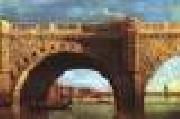 |
SCOTT, Samuel
|
|
English Painter, ca.1702-1772
English painter. In 1725 a sea-piece ascribed to Scott appeared at auction in London. In 1727 he was appointed Accomptant in the Stamp Office, Lincoln's Inn Square, London. |
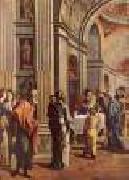 |
SCOREL, Jan van
|
|
Dutch Northern Renaissance Painter, 1495-1562
North Netherlandish painter and ecclesiastic. He was one of the first north Netherlandish artists to visit Italy, and his return to Utrecht in 1524 can be regarded as a turning-point in the history of painting in the northern Netherlands. The important role Scorel played in introducing Italian art in the north was recognized even by contemporary writers and was reiterated slightly later by van Mander |
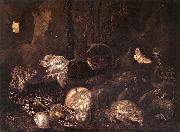 |
SCHRIECK, Otto Marseus van
|
|
Dutch Baroque Era Painter, 1619-1678
Dutch painter. According to Houbraken, he travelled to Italy and stayed in Rome and Florence with the painters Matthias Withoos and Willem van Aelst, the latter his pupil at the time. Among his patrons were Ferdinando II de' Medici, Grand Duke of Tuscany (reg 1621-70). Van Hoogstraten claimed that he met van Schrieck in Rome as late as 1652. In Rome, van Schrieck was a member of the Schildersbent. About 1657 he returned with van Aelst to Amsterdam, where he had a small property and got married on 25 April 1664. An inventory of the contents of his house was made in July 1678, shortly after his death, in which more than 300 paintings are listed. Besides his own paintings, there were works by Cornelis van Poelenburch, Simon de Vlieger, Ludolf Bakhuizen, Jan Wijnants, Lucas van Leyden |
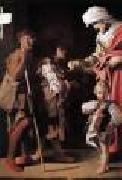 |
SCHEDONI, Bartolomeo
|
|
Italian painter, Emilian school (b. 1578, Modena, d. 1615, Parma)
Italian painter and draughtsman. He was the son of Giulio Schedoni, a mask-maker, who served the Este court in Modena and the Farnese in Parma; in 1598 Schedoni and his father are recorded as residing in Parma, both serving the court. In 1595 Ranuccio I, Duke of Parma, sent Bartolomeo to Rome, to train in the studio of Federico Zuccaro. Schedoni fell ill shortly after, however, and returned to Parma. His earliest surviving works show no evidence of Roman influence. The matter of Schedoni's training remains somewhat problematic. Carlo Cesare Malvasia claimed that he was a pupil of Annibale Carracci in Bologna, but there are reasons to doubt this. First, this would have been prior to Annibale's departure for Rome in 1595, a period when Schedoni was still apparently under his father's jurisdiction. Secondly, the early pictures indicate that initially his style was formed primarily by studying the work of Correggio in Parma. To a lesser degree he was influenced by the Parmesan culture of Parmigianino, Girolamo Mazzola Bedoli and Michelangelo Anselmi. As a boy in Parma he was also known to have frequented the studio of the Fleming Giovanni Sons (1547/8-1611). |
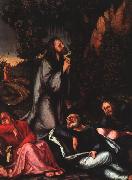 |
SCHAUFELEIN, Hans Leonhard
|
|
German Northern Renaissance Painter, ca.1480-1540
was a German painter, designer, and wood engraver. He was born in Nuremberg, probably studied under Wohlgemut, and then became the assistant of D??rer, whom he imitated. In 1512 he went to Augsburg and in 1515 removed to Nordlingen. He is a graceful narrator, and his types, though rarely accurately drawn, are attractive, but he lacks power and depth. Characteristic early paintings are the altarpiece at Ober Sankt Veit[1], near Vienna (1502), "Scenes from the Life of Christ" (Dresden Gallery), and "St. Jerome" (Germanic Museum, Nuremberg). To his Nordlingen period belong his masterpiece, the so-called "Ziegler Altar" for St. George's Church (1521), part of which is still in the church, part in the museum; "Scenes from the Story of Judith," in the town hall; and the illuminated Psalter for Count von Ottingen, now in the Berlin print room. His most important woodcuts are those for the Theuerdank of Emperor Maximilian. |
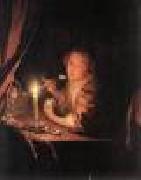 |
SCHALCKEN, Godfried
|
|
Dutch Baroque Era Painter, 1643-1706
Dutch painter and etcher, active also in England. He was the second son of Cornelis Schalcken from Heusden, a clergyman in Made, and Aletta Lydius, who came from a famous clerical family in Dordrecht. In 1654 the family moved to Dordrecht, where Cornelis was appointed headmaster of the Latin school. There Godfried was apprenticed to Samuel van Hoogstraten. He completed his training in Leiden with Gerrit Dou and by 1665 had returned to Dordrecht. Schalcken's earliest known works, for example the Doctor's Visit (1669; Germany, priv. col., on loan to Cologne, Wallraf-Richartz-Mus.), are dominated by the influence of Dou and the Leiden 'fine painters'. Like Dou, Schalcken painted small genre pieces with a wealth of painstakingly rendered detail, and his themes and frequent use of artificial lighting are strongly reminiscent of the Leiden master. The six prints known by him, including a portrait of Gerrit Dou and a few portraits after van Hoogstraten, must also originate from this period. Possibly under the influence of Caspar Netscher and Frans van Mieris, Schalcken soon afterwards adopted a freer touch with gentler transitions and a lighter palette and applied himself to painting genre pieces with elegant figures. |
 |
Scarsellino
|
|
(1550 (or 1551) - 1620), was an Italian Late-Renaissance - Mannerist painter of the School of Ferrara. He was born and died in Ferrara; however, he traveled and worked extensively across Italy, encountering many influences. He was born to an artist father, the less-talented Sigismondo Scarsella. Apparently he lived in Venice for 4 years around 1570, though it is not known if he was affiliated to a particular studio. His early works show the influences of various contemporary styles and painters including the venetian schools and locally Dosso Dossi.
A number of his works now are at the Galleria Borghese in Rome, The Bathing Venus, Diana and Endymion and Venus and Adonis. Scarsellino worked alongside the brothers Carracci in the Palazzo dei Diamanti in Ferrara. However, unlike the Carracci, Scarsellino's paintings have a decorative quality, and lack monumentality. World War II bombing of Dresden destroyed two of his paintings: Flight into Egypt and Holy Family at Work.
|
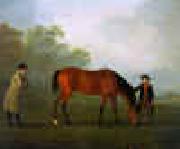 |
Sawrey Gilpin
|
|
1733-1807
English
Sawrey Gilpin Gallery
Gilpin was born 30 Oct 1733 in Cumbria, the son Captain John Bernard Gilpin, a soldier and amateur artist. His elder brother William Gilpin was a clergyman, schoolmaster, and author of several influential works on picturesque scenery.
Apprenticed to the marine painter Samuel Scott of Covent Garden, Sawrey came to specialise in painting animals, particularly horses and dogs, which he sometimes added to backgrounds by other artists, including Philip Reinagle, George Barret and J. M. W. Turner. He was patronised by Prince William Augustus, Duke of Cumberland. Gilpin was Director and President of the Society of Artists, and a member of the Royal Academy from 1796.
Sawrey Gilpin married Elizabeth Broom; their son William Sawrey Gilpin also became an artist, and in later life a landscape gardener.
He died at Broughton, Northamptonshire, England in 1807.
Works by Sawrey Gilpin are in the collections of the Courtauld Institute of Art , Tate Britain [3], and the Royal Academy in London and the Fitzwilliam Museum, Cambridge. |
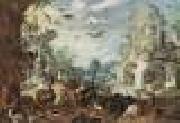 |
SAVERY, Roelandt
|
|
Flemish Northern Renaissance Painter, 1576-1639
Flemish Northern Renaissance Painter, 1576-1639.Painter, draughtsman and etcher, brother of (1) Jacob Savery I. The subject and miniaturist precision of his earliest dated work, Birds by a Pond (1600; St Petersburg, Hermitage), reflect the influence of Jacob, his presumed teacher. The strong Flemish current in Amsterdam c. 1600 is apparent in the Village Edge |
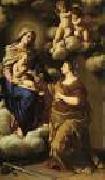 |
SASSOFERRATO
|
|
Italian Baroque Era Painter, 1609-1685
Italian painter and draughtsman. He served his apprenticeship under his father, Tarquinio Salvi. Tradition has it that he later (it is not known exactly when) studied with Domenichino in Naples, where he certainly had the opportunity of meeting Francesco Cozza and where he painted the Adoration of the Shepherds (Naples, Capodimonte). As a young man, Sassoferrato probably travelled often in the areas bordering on the Marches, for example in Umbria and particularly Perugia, where from 1630 he was connected with the Benedictine convent of S Pietro, for which he painted canvases of ten saints for the ceiling of the sacristy of the convent church
|
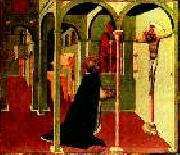 |
SASSETTA
|
|
Italian Early Renaissance Painter, ca.1390-1450 |
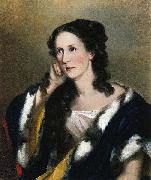 |
Sarah Miriam Peale
|
|
(Philadelphia, Pennsylvania, May 19, 1800 - February 4, 1885, Philadelphia) was an American portrait painter, one of the notable family of artists descended from the miniaturist and still-life painter James Peale, who was her father. She is noted as a portrait painter, mainly of politicians and military figures. Lafayette sat for her four times.
Sarah was James Peale's youngest daughter and was trained by her father, and uncle Charles Willson Peale. She served as a studio assistant to her father. Her first public works date from 1816 with subjects such as flowers and still-life but soon turned to portraiture, In 1818, she spent three months with Rembrandt Peale, her cousin, in Baltimore, and again in 1820 and 1822. He influenced her painting style and subject matter. For 25 years, she painted in Baltimore (1822-47) and, intermittently, in Washington, D.C.
She was accepted to the Pennsylvania Academy of Fine Arts in 1824 along with her sister Anna Claypoole Peale, the first women to achieve this distinction. Over 100 commissioned portrait paintings are known from her time in Baltimore and she was the most prolific artist in the city during that era. Her subjects were wealthy Baltimore residents and politicians from Washington DC. |
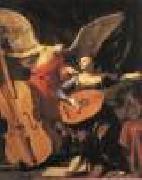 |
SARACENI, Carlo
|
|
Italian painter, Roman school (b. 1579, Venezia, d. 1620, Venezia). Italian painter. He is best known for his jewel-like paintings representing sacred and secular themes, which combine a delicate technique inspired by Adam Elsheimer with a note of observed realism owed to Caravaggio. He also painted altarpieces and worked in fresco. |
 |
Santo Peranda
|
|
(1566-1638) was an Italian painter of the late-Renaissance period.
He was a pupil of the painter Leonardo Corona and later Palma il Giovane. Also known as Santa Peranda. He painted a Descent from the cross for San Procolo in Venice. He painted The defeat of the Saracens for the Ducal Palace of Modena. He painted the Gathering of the Manna for the church of the San Bartolome. In 1623 he finished Glorious Mysteries for the church of San Nicole in Treviso. Among his pupils were Francesco Maffei, Matteo Ponzone, and Filippo Zaniberti.
|
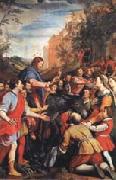 |
Santi Di Tito
|
|
Italian Painter and Architect, 1536-ca.1602
was an Italian painter of Late-Mannerist or proto-Baroque style, what is sometimes referred to as Contra-Maniera. Born in Borgo San Sepolcro, in Tuscany. There is little documentation to support the alleged training under Bronzino or Baccio Bandinelli. From 1558-1564, he worked in Rome on frescoes in Palazzo Salviati and the Sala Grande of the Belvedere (Homage of the People) alongside Giovanni de' Vecchi and Niccol?? Circignani. He acquired a classical trait, described as Raphaelesque by S.J. Freedburg. This style contrasted with the reigning ornate Roman painterliness of the Federico and Taddeo Zuccari or their Florentine equivalents: Vasari, Alessandro Allori, and Bronzino. Among his pupils was Cigoli. Another pupil named Francesco Mochi became a sculptor in the Baroque style, creating among other pieces, the colossal Saint Veronica', supervised by Gianlorenzo Bernini and placed in the crossing of St. Peter's Basilica in Rome. After returning to Florence in 1564, He joined the Accademia del Disegno, and he did not venture to paint outside of Tuscany. He contributed two unusual paintings for the Duke's study and laboratory, the Studiolo of Francesco I in the Palazzo Vecchio. This artistic project was partly overseen by Giorgio Vasari. These paintings are (the Sisters of Fetonte and Hercules and Iole). |
 |
Sanford Robinson Gifford
|
|
1823-1880
Sanford Robinson Gifford (July 10, 1823 ?C August 29, 1880) was an American landscape painter and one of the leading members of the Hudson River School. Gifford's landscapes are known for their emphasis on light and soft atmospheric effects, and he is regarded as a practitioner of Luminism, an offshoot style of the Hudson River School.
Returning to his studio in New York City, Gifford painted numerous major landscapes from scenes he recorded on his travels. Gifford's method of creating a work of art was similar to other Hudson River School artists. He would first sketch rough, small works in oil paint from his sketchbook pencil drawings. Those scenes he most favored he then developed into small, finished paintings, then into larger, finished paintings. |
 |
Sanford Gifford
|
|
(July 10, 1823 C August 29, 1880) was an American landscape painter and one of the leading members of the Hudson River School. Gifford's landscapes are known for their emphasis on light and soft atmospheric effects, and he is regarded as a practitioner of Luminism, an offshoot style of the Hudson River School.
|
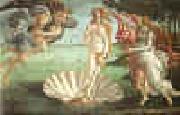 |
Sandro Botticelli
|
|
Italian Early Renaissance Painter, 1445-1510
Italian painter and draughtsman. In his lifetime he was one of the most esteemed painters in Italy, enjoying the patronage of the leading families of Florence, in particular the Medici and their banking clients. He was summoned to take part in the decoration of the Sistine Chapel in Rome, was highly commended by diplomatic agents to Ludovico Sforza in Milan and Isabella d Este in Mantua and also received enthusiastic praise from the famous mathematician Luca Pacioli and the humanist poet Ugolino Verino. By the time of his death, however, Botticelli s reputation was already waning. He was overshadowed first by the advent of what Vasari called the maniera devota, a new style by Perugino, Francesco Francia and the young Raphael, whose new and humanly affective sentiment, infused atmospheric effects and sweet colourism took Italy by storm; he was then eclipsed with the establishment immediately afterwards of the High Renaissance style, which Vasari called the modern manner, in the paintings of Michelangelo and the mature works of Raphael in the Vatican. From that time his name virtually disappeared until the reassessment of his reputation that gathered momentum in the 1890s |
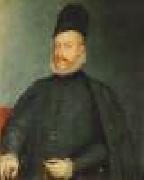 |
SANCHEZ COELLO, Alonso
|
|
Spanish Painter, ca.1531-1588
was a portrait painter of the Spanish Renaissance and one of the pioneers of the great tradition of Spanish portrait painting. Alonso Senchez Coello spent his childhood in Benifair de les Valls, until the death of his father when he was around ten years old. He was educated in Portugal at his grandfather's home. Coello's years in Portugal and his family name of Portuguese origin led to a long-standing belief that he was in fact Portuguese. His grandfather (after whom he was named) was in the service of King John III of Portugal who sent the young painter to study with Anthonis Mor (also known as Antonio Moro) in Flanders around 1550. He was under the service of Antoine de Granville, bishop of Arras, learning from Mor. While studying in Flanders, Coello also spent time copying some of Titian's works. In 1552, the painter went to Lisbon with Anthonis Mor when Charles V commissioned Mor to paint the Portuguese royal family. For a few years, Senchez Coello remained in Portugal working for the court of the heir to the throne, John, Crown Prince of Portugal. After the prince's death, Senchez Coello moved to the Spanish court of Philip II, having been recommended by the widow of John, Juana, who was the sister of the Spanish king. In 1555, S??nchez Coello was in Valladolid working for the Spanish court, and when Mor left Spain in 1561, Senchez Coello took his former master's place as Court Painter. Senchez Coello married Louisa Reyaltes in either 1560 or 1561 in Valladolid, and they had seven children. Coello's daughter, Isabel Senchez (1564-1612), |
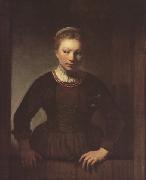 |
Samuel van hoogstraten
|
|
Dutch Baroque Era Painter, 1627-1678
Dutch portrait painter and etcher, studied with his father, Dirk van Hoogstraten (1596?C1640), and with Rembrandt. His best works, such as The Old Jew (Vienna), reflect the influence of Rembrandt. He was director of the Academy in Dordrecht and author of a treatise (1678) in which he analyzed the theory and practice of the art of Rembrandt and other artists of the period. |
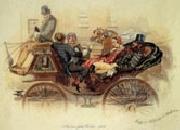 |
Samuel Thomas Gill
|
|
(Devon, England 1818 - Melbourne 1880 ) Australian/British Artist
Australian/British Artist,also known by his signature S.T.G., was and English-born Australian artist. Gill was born in Perriton, Somerset, England, son of the Reverend Samuel Gill, a Baptist minister, and his first wife, Winifred Oke. Rev. Gill became the headmaster of a school at Plymouth, where the son was first educated, then he continued to Dr Seabrook's Academy, Plymouth. Having moved to London, Gill was employed as a draughtsman and watercolour painter by the Hubard Profile Gallery, before departing for the colony of South Australia in 1839 with his parents, arriving in December. Gill arrived in Adelaide, aged 21 and established a studio in 1840, and called for those 'desirous of obtaining a correct likeness' of themselves and their families, friends, animals and residences to contact him. His activities soon expanded to include street scenes and public events, including the newly discovered copper mines at Burra Burra as well as the departure of Charles Sturt's expedition for the interior on 8 October 1844. |
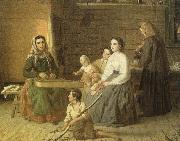 |
samuel taylor coleridge
|
|
Born: 21 October 1772
Birthplace: Devonshire, England
Died: 25 July 1834 (heart attack)
Best Known As: The author of The Rime of the Ancient Mariner |
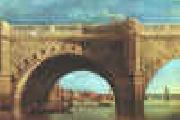 |
Samuel Scott
|
|
1702-1772
British
Samuel Scott Gallery
(b London, c. 1702; d Bath, 12 Oct 1772). English painter. In 1725 a sea-piece ascribed to Scott appeared at auction in London. In 1727 he was appointed Accomptant in the Stamp Office, Lincoln's Inn Square, London, an office he held for 28 years at an annual salary. |
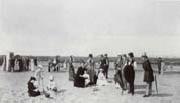 |
Samuel S. Carr
|
|
American, 1837-1908,was an American pastoral and landscape painter. Originally from England, he relocated to the U.S. (specifically, New York City, where he later studied mechanical drawing in 1865) around 1862. He is recorded as having lived in Brooklyn from 1879 to 1907, along with his sister, Annie, and her husband, John Bond. He never married. He is a fairly well-known artist |
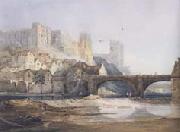 |
Samuel Prout
|
|
English Painter, 1783-1852
was an English water-colour painter. He was born at Plymouth, and spent whole summer days, in company with Benjamin Haydon, drawing the quiet cottages, rustic bridges and romantic watermills of the beautiful valleys of Devon. He made a journey through Cornwall to try his hand in furnishing sketches for Britton's Beauties of England. In 1803 he moved to London, where he stayed until 1812. In London, Prout saw new possibilities, and endeavoured to correct and improve his style by studying the works of the rising school of landscape. To earn a living, he painted marine pieces for Palser the printseller, took students, and published drawing books for learners. He was one of the first to use lithography in his artwork. It was not however until about 1818 that Prout discovered his niche. Happening time to make his first visit to the Continent, and to study the quaint streets and market-places of continental cities, he suddenly found himself in a new and enchanting province of art. His eye caught the picturesque features of the architecture, and his hand recorded them with skill. The composition of his drawings was exquisitely natural; their colour exhibited "the truest and happiest association in sun and shade"; the picturesque remnants of ancient architecture were rendered with the happiest breadth and largeness, with the heartiest perception and enjoyment of their time-worn ruggedness |
|

